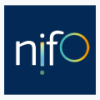
This section provides an overview of key information about interoperability for smart cities, which aim at capturing the most recent developments and trends in the field of digital public administration at the local and regional level.
In the past decade, Europe has witnessed a significant surge in smart city initiatives, reflecting a growing emphasis on leveraging data and innovative technologies to enhance decision-making and citizens' well-being. The establishment of data spaces and local digital twins has emerged as a particularly promising avenue in this pursuit. While the benefits of smart city projects are considerable, public administrations also grapple with various challenges in implementing and managing these transformative endeavors.
Proposal for a European Interoperability Framework for Smart Cities and Communities (EIF4SCC) by the Commission (DG DIGIT and DG CONNECT)
The Commission (DG DIGIT and DG CONNECT) published the Proposal for a European Interoperability Framework for Smart Cities and Communities. EIF4SCC aims to provide EU local administration leaders with definitions, principles, recommendations, practical use cases drawn from cities and communities from around Europe and beyond, and a common model to facilitate delivery of services to the public across domains, cities, regions and borders.
Related items:
Study on interoperability challenges for local digital twins and data spaces: Report and guidance document
Under the leadership of DG DIGIT and DG CNECT and with the support of the Living-in.EU network, a study was conducted by Wavestone under the National Interoperability Framework Observatory (NIFO) to identify and present the main organisational and cultural interoperability challenges arising when public administrations are establishing local and regional data spaces and local digital twins. To do so, an in-depth report on this topic was produced, complemented by a guidance document including practical steps and best practices for each type of stakeholder involved in smart city projects (citizens, public administrations, private sector, etc.).
In-depth report of organisational and cultural interoperability issues and practices in place within public administrations related to the four use cases
In the context of this study, NIFO analysed the interoperability challenges faced by cities and communities when creating and implementing data spaces and local digital twins, through four use cases:
- The city of Amsterdam;
- The city of Helsinki;
- The city of Valencia;
- The Flanders Region.
Following a literature review, the use cases analysis, and the collection of primary data, the report provides an overview of the EU legislative and policy framework supporting the emergence of data spaces and digital twin projects and the role of interoperability as a key enabler for the development of a data-driven society. The report then identifies a series of organisational and cultural interoperability challenges, including the insufficiency of common rules and processes, the need for a clearer governance framework, the lack of trust on data sharing and innovation culture, the deficit of awareness on the benefits of local digital twins and data spaces, and the scarcity of digital skills.
-> Click here to access the report
Guidance document on the roles, responsibilities, governance structures, processes and workflows relating to organisational and cultural interoperability
Based on the findings of the in-depth report and additional stakeholders’ consultations, the guidance document presents practical steps and best practices for each type of stakeholder involved in smart city projects: citizens and civil society organisations, public administrations, political leaders, private companies, and academia. These recommendations are divided into each phase of project management (inception, planning, implementation, and monitoring) and include both operational and general recommendations. In addition, toolboxes highlight relevant resources for the readers.
-> Click here to access the guidance document

